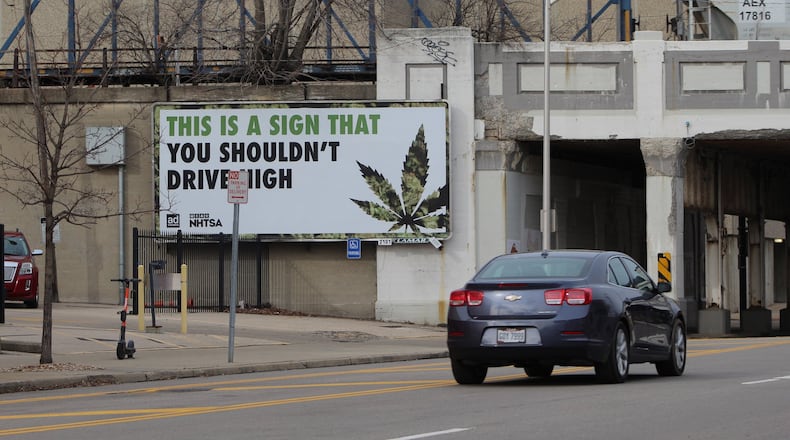Ohio lawmakers are considering changing state law to try to prevent motorists from being convicted of impaired driving if they have traces of cannabis in their system but were not high while behind the wheel.
“You don’t have to be high to test positive for cannabis impairment under Ohio law,” said Charles Rowland II, a local attorney with 30 years of experience representing people who are charged with operating a vehicle under the influence of alcohol or drugs (often called OVI or DUI).
Researchers at Wright State University analyzed coroner records for 246 drivers who died in car crashes between January 2019 and September 2024 in Montgomery County who were tested for marijuana.
According to the study, 103 drivers tested positive for THC, and average blood level concentrations listed in the toxicology reports were significantly higher than the threshold that is considered to cause impairment.
Over the six-year study period, THC positivity among deceased drivers ranged from 25% to 48%, averaging 42%, said Dr. Akpofure Ekeh, professor of surgery at Wright State University’s Boonshoft School of Medicine and the study’s lead author.
“The average THC level was 30 ng/mL—approximately six times the per se impairment limit established in some states," Ekeh said.
Ekeh said average THC blood levels suggest that the drivers must have consumed marijuana not long before they got into deadly car crashes.
People killed in motor vehicle crashes are tested for volatile compounds like ethanol and a panel of 95 commonly used and abused drugs, said Matthew Juhascik, chief toxicologist at the Montgomery County Coroner’s Office and Crime Laboratory. The coroner’s office declined to comment on the study, saying staff was not involved in reviewing the data or producing the findings.
The study found that the share of drivers who died in car crashes with marijuana in their systems in the county only increased slightly after Ohio voters legalized recreational pot in late 2023. The research was presented at the American College of Surgeons Clinical Congress in Chicago on October 7 by Lois Nguapa, a fourth-year medical student working under Ekeh’s supervision.
“The lack of a significant increase post-legalization was somewhat unexpected,” Ekeh said. “However, we only captured data for about one year after legalization, so it may be too soon to draw definitive conclusions.”
Ekeh said the push for recreational marijuana legalization in Ohio and elsewhere has not been paired with strong enough public health messaging about the risks of acute and chronic use.
“As with alcohol, there must be clear warnings about the dangers of using marijuana and driving,” he said.
An earlier study of toxicology data published last year in Injury Epidemiology found that more than one-third of fatally injured drivers tested positive for cannabis use (33.4%). About 39% of drivers in motor vehicle crashes in Michigan in 2020 tested positive for cannabis, though the positivity rate fell in subsequent years, says a report released last month by the University of Michigan Injury Prevention Center.
Sixty or more fatal crashes have taken place in Montgomery County in four of the last five years, state patrol data states, and nearly two-thirds of fatal crashes across the county were OVI-related in 2023 and 2024.
Earlier this month, Dayton police Sgt. Gordon Cairns said officers are arresting more motorists for driving impaired from THC use. Cairns said some community members do not seem to understand that while recreational marijuana is legal in Ohio, it remains illegal to get high and then drive a motor vehicle.
About the Author



